Chef Fiorenzo emphasized that Italian cuisine is based on the region, the product, and the producer. “True original cooking is based on the land, not imported or exported. It is better to have less dishes, but to know your products.” This chef also used the terminology “Zero Kilometer Cooking.” As you can see in the pictures the chef has a very large organic garden on his property from which he gathers many of the products he prepares. He had basement with many fruits, vegetables, and juices that he preserved and uses in the restaurant. He has a cheese aging room and meat aging room under the restaurant. At breakfast we not only had jams and preserves from his property, but apple juice that he made and put up and Sambuca from foraged Sambuca flowers. It was a wonderful few days cooking with a passionate, traditional, locally minded Chef; it is his life not a trend.
The Trentino region is a very diverse region in the north east part of Italy above and to the east of the Lombardy region and west of the Veneto region. It is in the Dolomite Mountains and borders Austria. The area has a varied climate from a Mediterranean climate capable of producing olives, and citrus fruits in the southern part of Lake Garda to the Alpine harshness which offers its own bounty of products. The area produces many wines, and is known for producing a variety of excellent white wines in particular. A variety of grapes are grown in the region from the southernmost point to the mountains. The mountains are known for their quality of livestock to be used for both cheese production and for beef. The mountain areas produce a variety of cheeses using the milk from cows, sheep, and goats. The cheeses of the Trentino tend to be less potent tasting then cheeses in some of the other regions of Italy. It is a reflection of their proximity to the German world where many of the cheeses tend to be on the milder side. The area does produce a cheese called Trentingrana which is a wonderful aged cheese that is made high up in the mountains that is very similar to Grana Padano, and Parmesan Reggiano, but has its own wonderful characteristics. It is worth seeking out. The Trentino has an amazing agricultural heritage and produces a wide variety of fruits and vegetables. The area produces an amazing amount of apples, but also apricots, cherries, berries, kiwi, olives, figs and many other fruits. The area has many wild herbs and plants, and mushrooms are abundant in the fall and spring. There are areas in the Trentino such as the Gresta Valley that are dedicated to farming based exclusively on the use of natural and organic methods. The mountains provide wonderful grazing land for cows, sheep and goats. While these animals spend the cold winters inside barns eating grass and hay cut over the summer, they spend the spring, summer, and fall grazing the mountain pastures, eating grass, plants, and wildflowers. The meat and milk from these animals are very flavorful because of their alpine diet. Asino (Ass) is used in the region, as is game. Cervo (deer) is prevalent and is used both cooked-often in stews, and cured. We tasted prosciutto made from Asino and ate cured and cooked Cervo – all were wonderful. Many people here do their own curing. Speck is a favorite of the area- Speck is a cured and smoked pork belly that is popular in Germany and Austria. The region also provides for excellent fresh water fish, primarily trout. Honey is produced- think flowering alpine meadows. Chestnuts are prevalent and are used in a variety of preparations sweet and savory. And lets not forget polenta – this area grows a special corn that is dried and ground for polenta. Flour of Storo is the preferred cornmeal for making polenta in the region. Interesting what we call Caraway Seeds – is called Cumino , I was confused at first. Also at every meal we drank Sambuca – a sweet drink made from simple syrup and the Sambuca flower that grows wild here.
We cooked: Tortel di Patate –like a Roesti Potato, Vellutata di Asparagi (w/ white asparagus), Gnocchetti di Ricotta ed Erbe Fini, Strangolpreti (choke the priest), Canederli, Polenta Normale, Polenta di Patate, Sguazet (offal stew), Cervo in Umido (Wild Deer Stew), Salas Anice, Torta di Carote, Zelten Trentino, and Grostoli. We tasted many wonderful cured meat and cheese. We had prosciutto made from Asino (ass) it was really tasty. Also some carpaccio of Cervo (deer) that had been marinated and then aged in a sealed vacuum bag for many months, very tender, and great flavor. We tasted many the jams and preserved vegetables and fruits the chef made, including a Pepper Preserve that reminded me of being in Texas and eating Jalapeno Jelly – it was a nice surprise.
Wednesday, May 28, 2008
Subscribe to:
Post Comments (Atom)











































































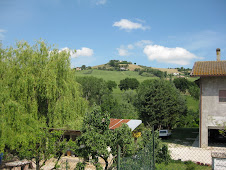

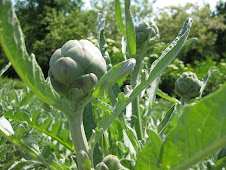


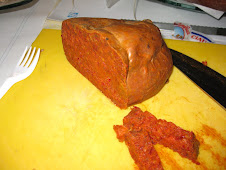
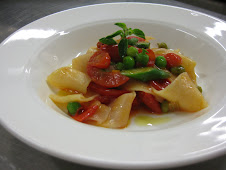
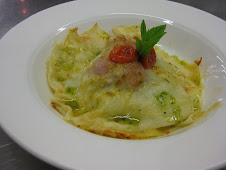
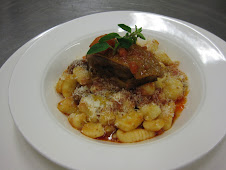








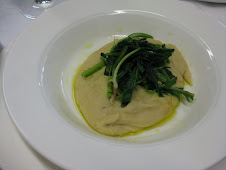

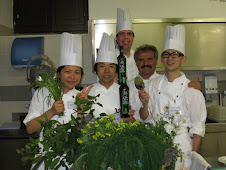
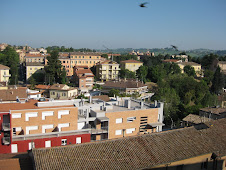


4 comments:
WOW! I can truly tell you that I am jealous.
Great to see a immersion in something I know you love... and the family gets to go with you!
I was looking through the blog... Salumi Tasting (05/13/08... was ALL of the dry curing done without nitrate/nitrite salts?
What is that huge cured thing hanging next to the sausagein one of the slide show pictures?
Is it a half pig that was cured?
Donnie
Great to hear from you - I have been meaning to send you some of Tanys and mine salami for month-call me slacker - i promise when I return - Some of the salami we taste is industrial and does have nitrites, but much of it is only cured with salt. All the stuff you see hanging in the mountains is salt and spices only.
Tany - YES!!! it is a half of pig turning into Speck - we ate some and it is awsome - we are going to have to find some where bigger for our meat curing - maybe my garage.
We can hang it across the two doors. We just need to ask Sammy if he could slaughter one of his pigs when it will reach the right size to feet our aging meat cooler.
Post a Comment